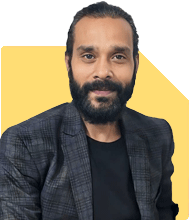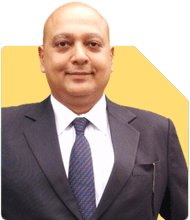My child wants to pursue a fully-funded PhD in Chemistry – Which country offers the best opportunities?
Dr Pananjay K Tiwari | Answer |Ask -Follow
Study Abroad Expert - Answered on Sep 04, 2024
They also guide PhD students who are studying internationally with their research.
Dr Pananjay has 21 years of academic and research experience and has published several books and research papers in various Indian and international journals.
He is a gold medallist with a master’s degree in science and a PhD in environmental sciences from the Hemvati Nandan Bahuguna Garhwal Central University, Uttarakhand.... more

Which country is easy to get fully funded phd, my ward is looking for fully funded phd in chemistry
Pls contact us at: www.shreeoverseaseducation.com
You may like to see similar questions and answers below
Sushil Sukhwani | Answer |Ask -Follow
Study Abroad Expert - Answered on Mar 27, 2024
Sushil Sukhwani | Answer |Ask -Follow
Study Abroad Expert - Answered on Mar 22, 2024
Mayank Chandel |2575 Answers |Ask -Follow
IIT-JEE, NEET-UG, SAT, CLAT, CA, CS Exam Expert - Answered on Jun 25, 2024
Sushil Sukhwani | Answer |Ask -Follow
Study Abroad Expert - Answered on Mar 18, 2025
Dr Karan Gupta | Answer |Ask -Follow
International Education Counsellor - Answered on Jul 22, 2025
Ramalingam Kalirajan |10893 Answers |Ask -Follow
Mutual Funds, Financial Planning Expert - Answered on Dec 15, 2025
Ramalingam Kalirajan |10893 Answers |Ask -Follow
Mutual Funds, Financial Planning Expert - Answered on Dec 15, 2025
Radheshyam Zanwar |6746 Answers |Ask -Follow
MHT-CET, IIT-JEE, NEET-UG Expert - Answered on Dec 15, 2025
Ramalingam Kalirajan |10893 Answers |Ask -Follow
Mutual Funds, Financial Planning Expert - Answered on Dec 15, 2025
Ramalingam Kalirajan |10893 Answers |Ask -Follow
Mutual Funds, Financial Planning Expert - Answered on Dec 15, 2025
Ramalingam Kalirajan |10893 Answers |Ask -Follow
Mutual Funds, Financial Planning Expert - Answered on Dec 15, 2025
Samraat Jadhav |2508 Answers |Ask -Follow
Stock Market Expert - Answered on Dec 15, 2025
Ramalingam Kalirajan |10893 Answers |Ask -Follow
Mutual Funds, Financial Planning Expert - Answered on Dec 15, 2025
Reetika Sharma |425 Answers |Ask -Follow
Financial Planner, MF and Insurance Expert - Answered on Dec 15, 2025
Radheshyam Zanwar |6746 Answers |Ask -Follow
MHT-CET, IIT-JEE, NEET-UG Expert - Answered on Dec 15, 2025



























